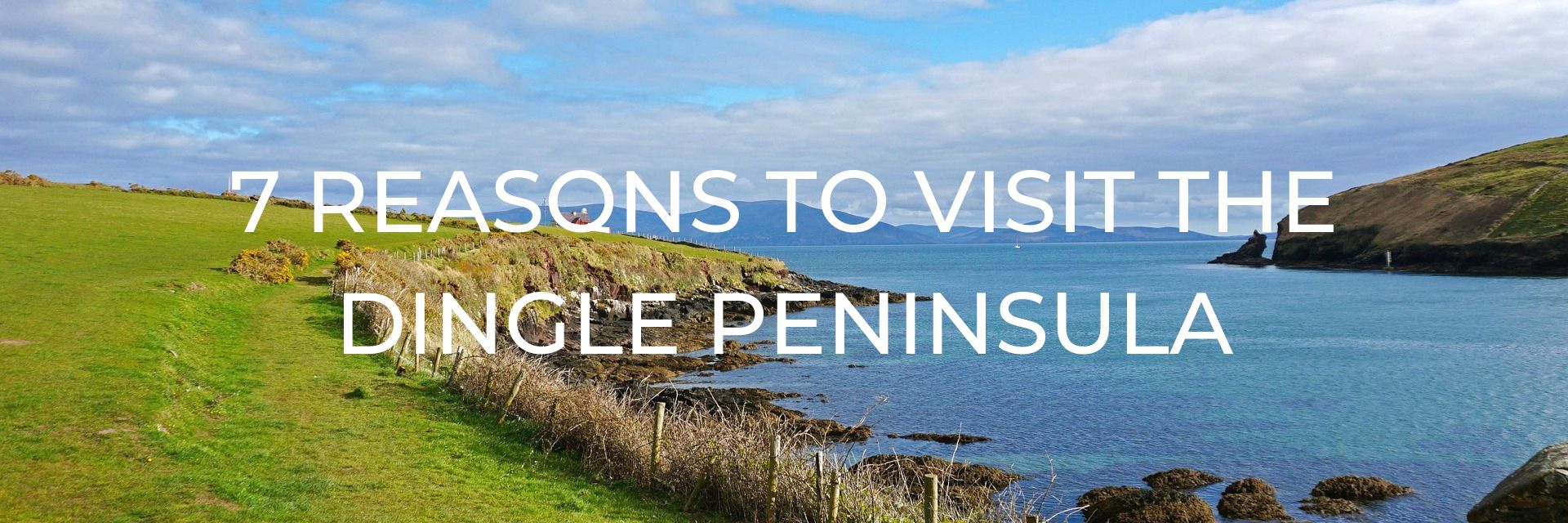
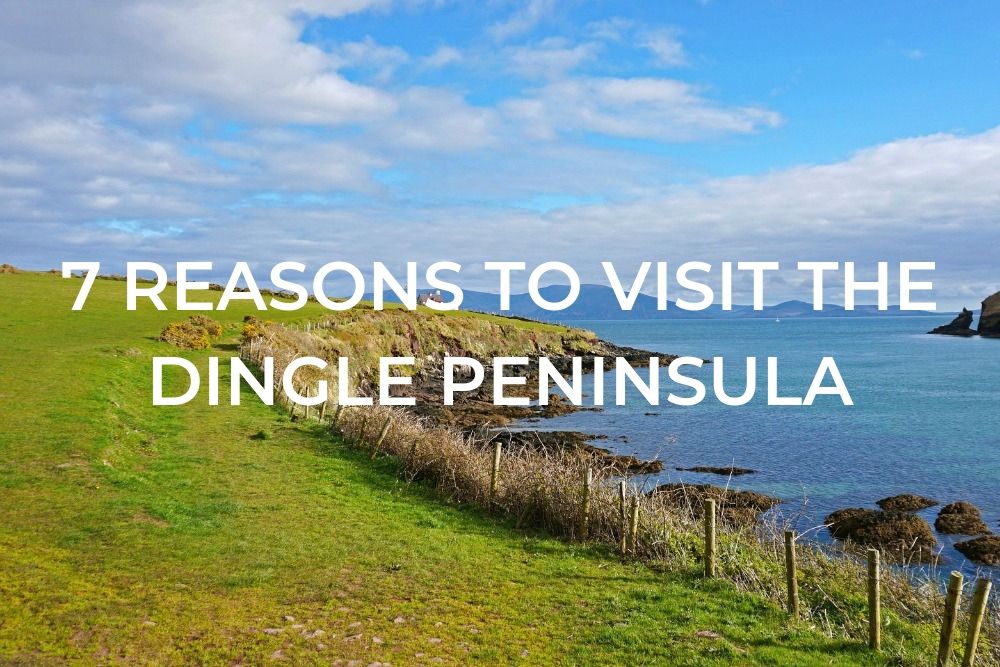
If you’ve been considering a trip to Ireland then you’ve no doubt heard of the Ring of Kerry, but have you heard about its nearby neighbour the Dingle Peninsula?
Personally, I’d heard of the Ring of Kerry long before I’d ever been told about the Dingle Peninsula. Leave it to good old Rick (Rick Steves of course!) to share this gem with his fellow travellers and since Rick has never steered me wrong I said, “Sign me up!” I’m happy to report Rick maintains his perfect recommendation record with me as the Dingle Peninsula is awesome!
Want to save this for later? Click the Pinterest button on the left for a pinnable image!
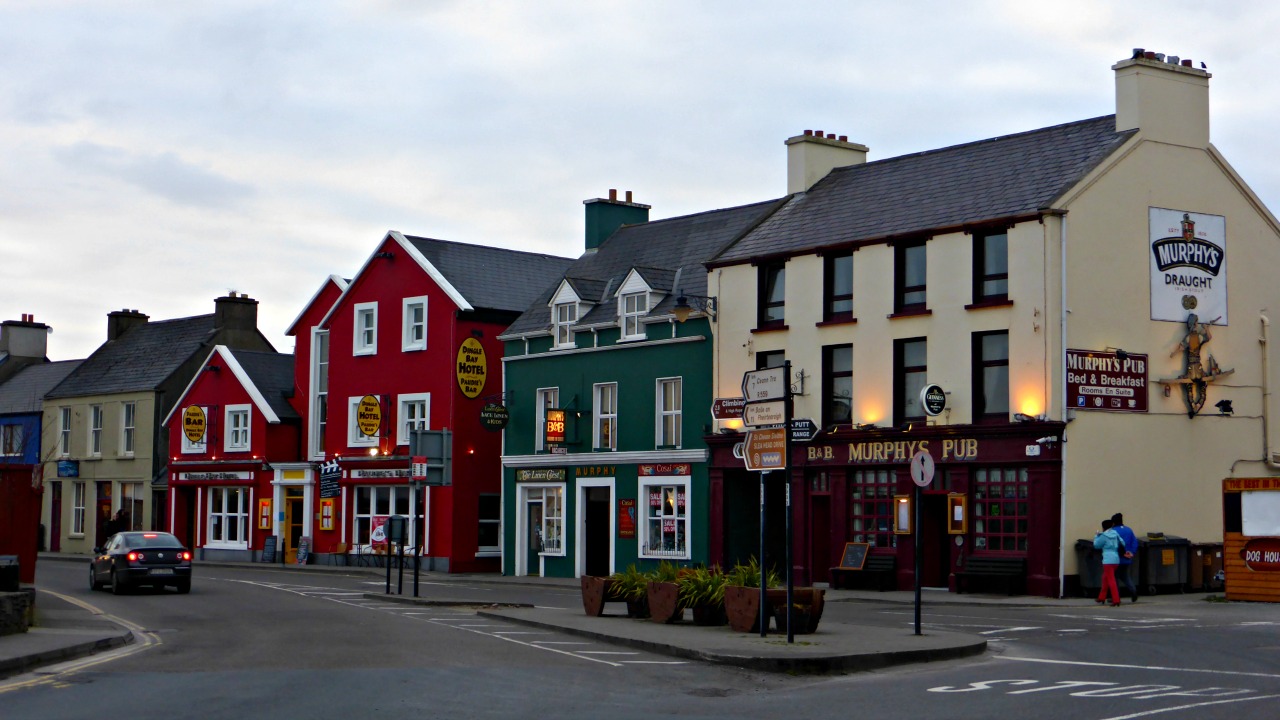
The Dingle Peninsula is dominated by a mountain range that runs right through the middle of it and includes the second highest peak in Ireland, Mount Brandon. 500 years ago Dingle was a busy seaport and trade gateway due to the harbour and it’s quick transit to Spain, but basically remained a fortified English town surrounded by Irish peasants.
It never became any more industrialized than that (let’s hope that doesn’t change) so it is the best part of Ireland to see so many still intact archaeological monuments. Then to top it all off it just seemed so “Irish”- perhaps due to being part of the Gaeltacht, a region that the government subsidies to help ensure the survival of the Irish language and culture.
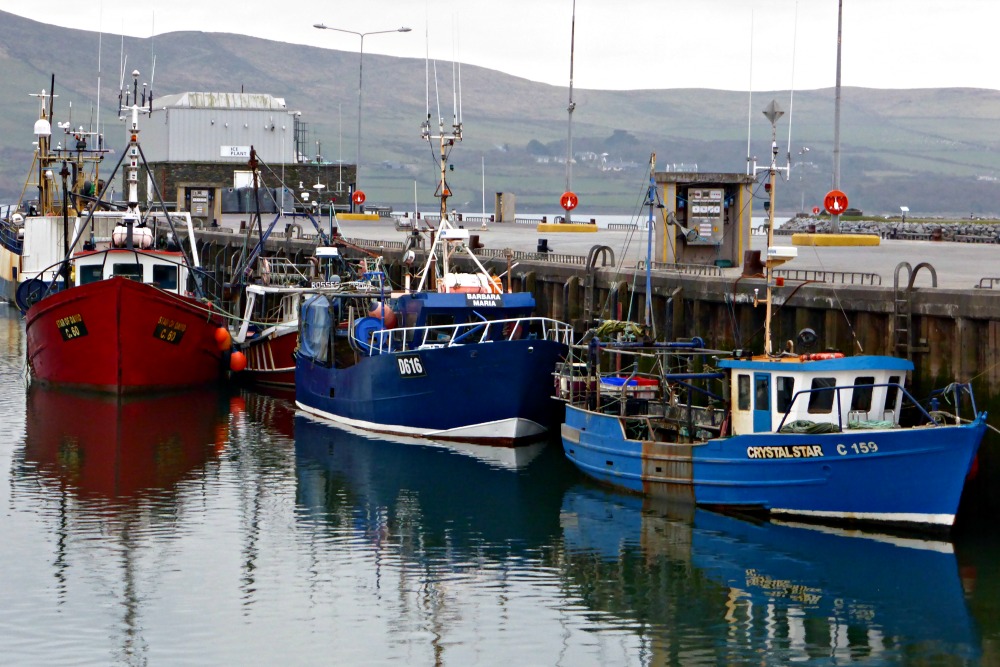
Yes, even way out on the westernmost tip of Ireland, the Dingle Peninsula has something for everyone. From spectacular coastlines to exciting scenic drives, to ancient monuments, to….well I better stop or I’ll have listed everything right here in this one sentence!
Much quieter than the Ring of Kerry, I also thought it was the more scenic of the two drives- which can be attested to by the 65 photos I chose for this post before I started writing. Yep, 65. Don’t worry, I’ve narrowed them down considerably to reflect the 7 reasons I think you need to add the Dingle Peninsula to your Irish road trip itinerary and we’ll start with …
THE ROADS, OF COURSE!
You’re planning a road trip so naturally scenic drives are a must. Well, you are in luck because the Dingle Peninsula has two great drives all its own- the Connor Pass and Slea Head Drive. It’s also part of the Wild Atlantic Way that is along the whole western coast of Ireland and would be worth another trip to Ireland just to drive the length of it.
The Slea Head Drive winds its way up lush green hills, around tight corners that hug the sides of mountains, and along stunning stretches of craggy coastline and quiet beaches. It’s only 47 km, but it’s 47 km of beautiful scenery, ancient sites and cosy villages.
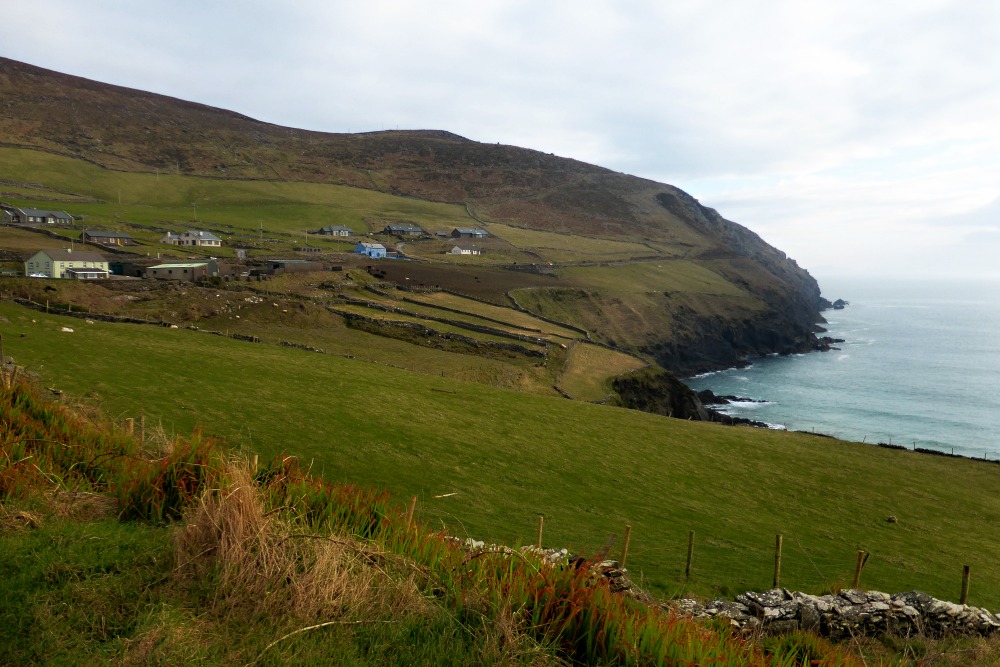
The drive begins in Dingle Town, makes its way out to the beach at Ventry Bay, past ancient stone structures Dunbeg Fort and Beehive Huts, out to the headland that gives the drive its name and offers views (and a ferry) out to the Blasket Islands, then on to the Reasc Monastic site and a 1000-year-old church called the Gallarus Oratory. With all this to see you’ll want to give yourself several hours to cruise along and pull off at any of the several scenic lookouts along the way.
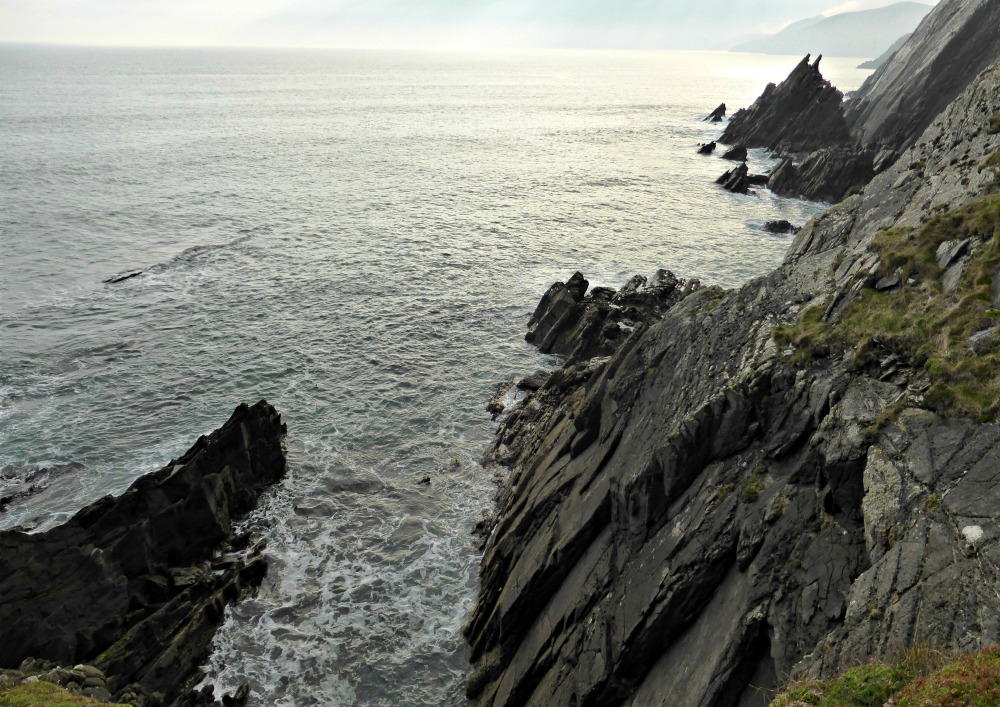
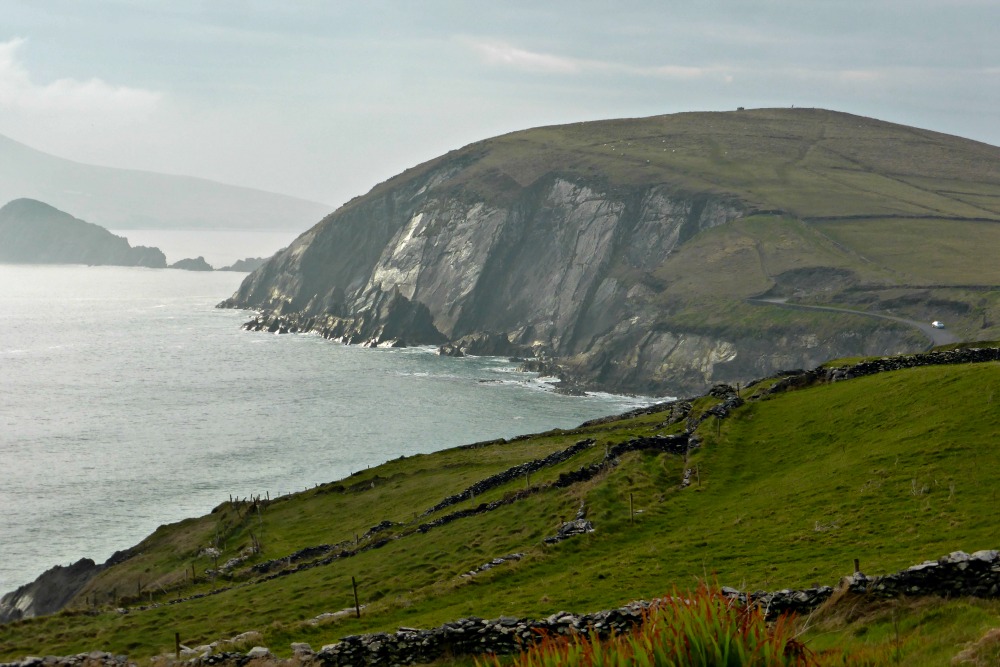
If the narrow roads on the Slea Head Drive didn’t scare you and you’re up for more of a challenge then the Connor Pass is what you are looking for.
You know a road is going to be a wee bit tight when great signs warn you at either end of it to TURN BACK NOW if you are driving a big truck or RV. I’m thinking anything bigger than

We then stuck close to the sides of the Brandon Mountains through the landscape shaped by glaciers. There are a few scenic viewpoints along the way to really enjoy the views of the coast, lakes, a small waterfall, and the mountains.
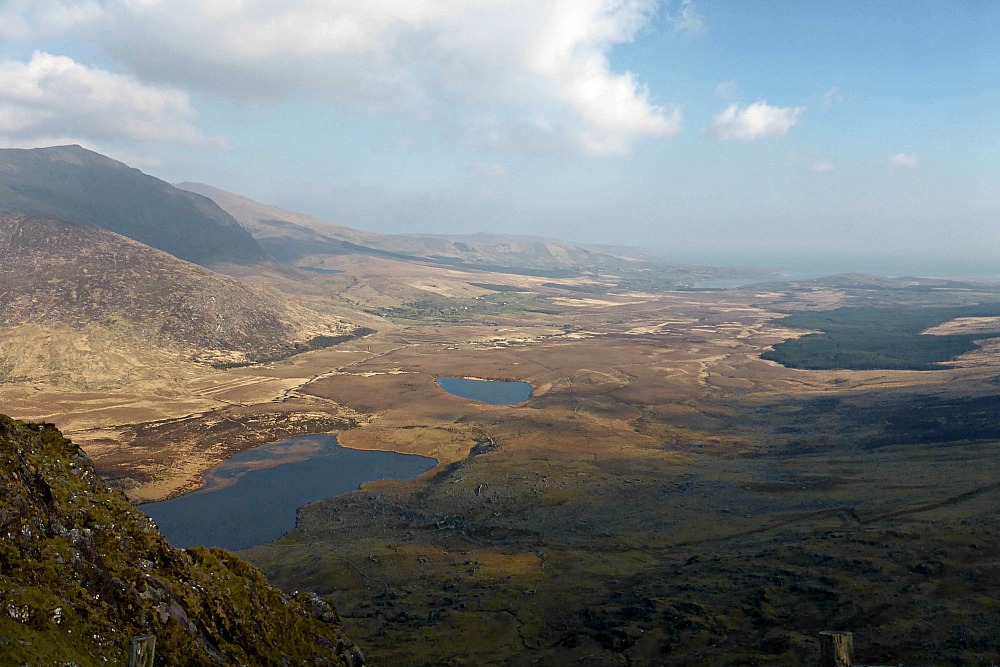
THE SEA
After the lush green hills, the next thing I think of when I think of Ireland is the sea. Wild, stormy seas with tragic tales of missing fishermen and sailors, and then calm seas that let you see as far as the eye can see or watch a beautiful sunset.
The Dingle Peninsula won’t disappoint if it’s the sea you’re looking for, especially if you also love the sound of the waves crashing against jagged rocks and cliffs.
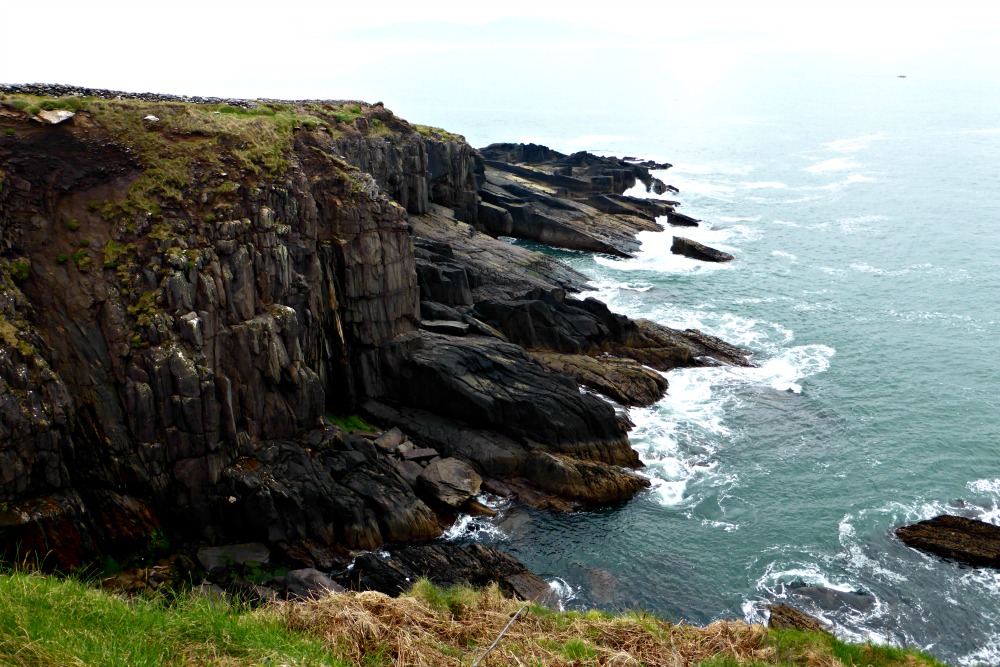
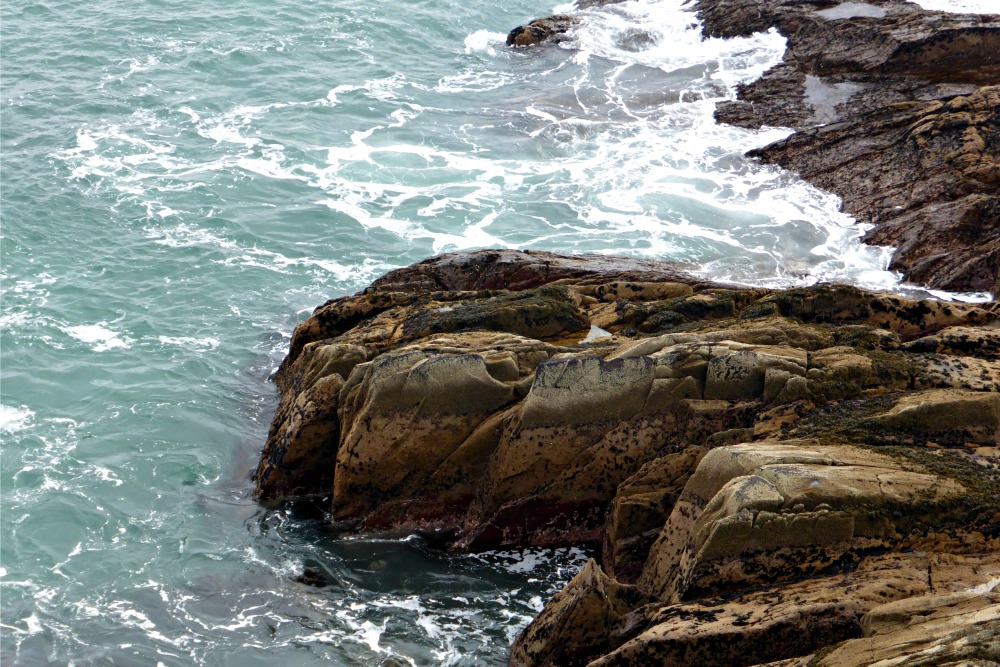
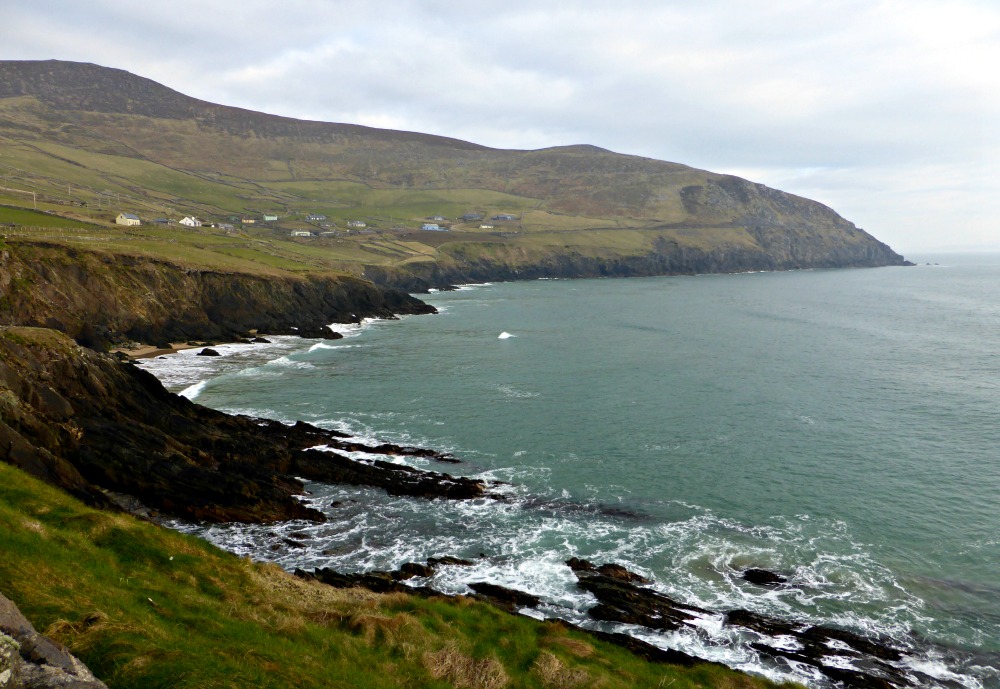
Standing watch over the sea at the head of the peninsula is a large, white crucifix which has a few theories of why it is there. I’ve read that it is to mark the border between two church parishes and also to watch over fishermen at sea. Whatever the reason it is really pretty and marks an ideal spot to pull over for views of the Blasket Islands.
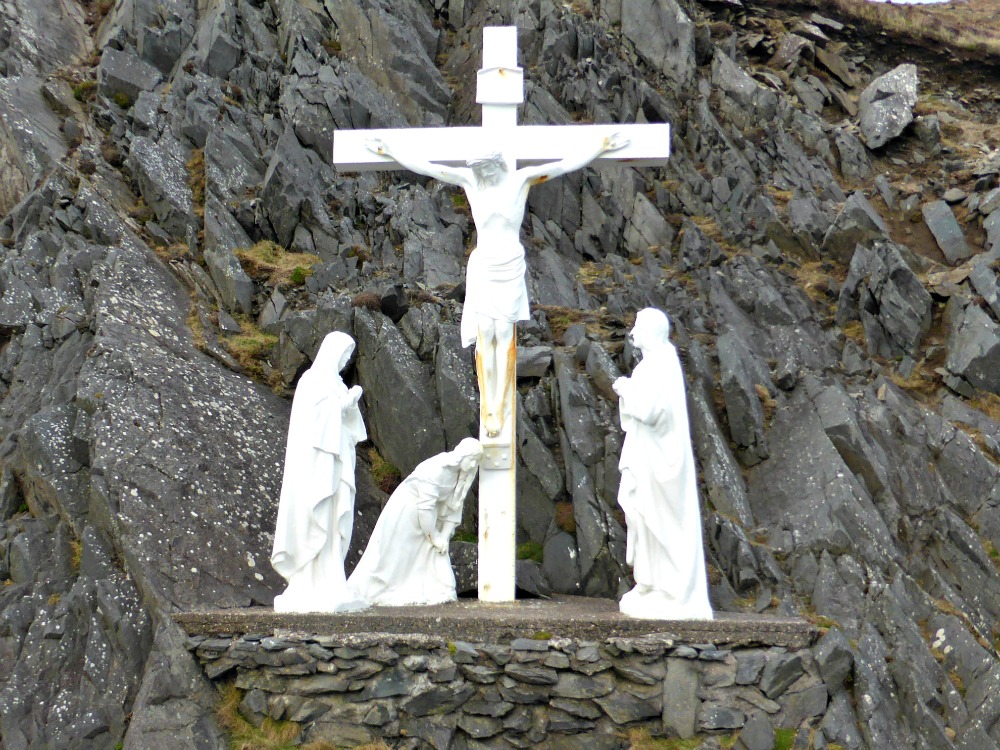
Despite its beauty, the sea has claimed many ships along the Wild Atlantic Way and there is one shipwreck that can be seen from the Dingle Peninsula. In 1982 the MV Ranga was wrecked at Dunmore Head (very close to Slea Head) on its maiden voyage from Spain to Iceland. You do have to visit at the right time to see it to catch it when the tide is low enough. We tried, were unsuccessful, but it was still
ALL THAT HISTORY
History enthusiasts will love the Dingle Peninsula for its mix of ancient sites- stone forts, churches, and even little Beehive huts.
The first of the stone forts we came upon was the promontory fort called Dunbeg that I wrote about earlier with the other stone forts on the Ring of Kerry. After our stop at that fort, we paid a visit to the very nearby Fahan Beehive Huts, also known as Caher Conor, which
At one time there were about 400 of
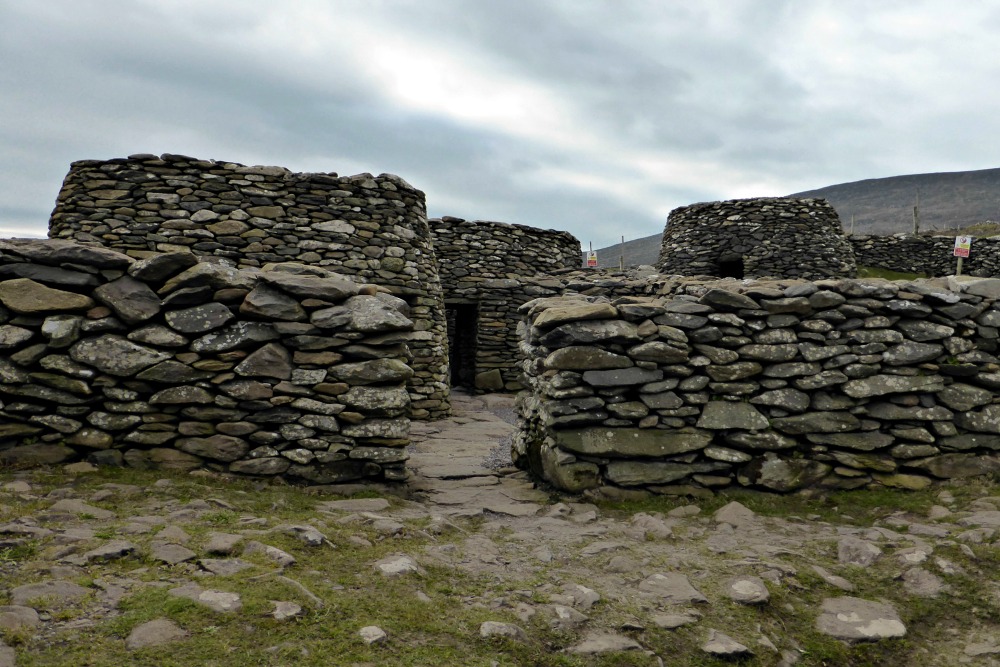
Along a little further is likely one of the most famous sites on the Dingle Peninsula– the Gallarus Oratory. Dating from between the 7th and 8th centuries this little stone chapel is from very early Christian times and would have been the place of worship for the local farmers. It is built without mortar using local stones, yet remains dry inside and in remarkable condition ( with no restoration) despite the Atlantic winds and rains that have blown against it these past 1,300 years.
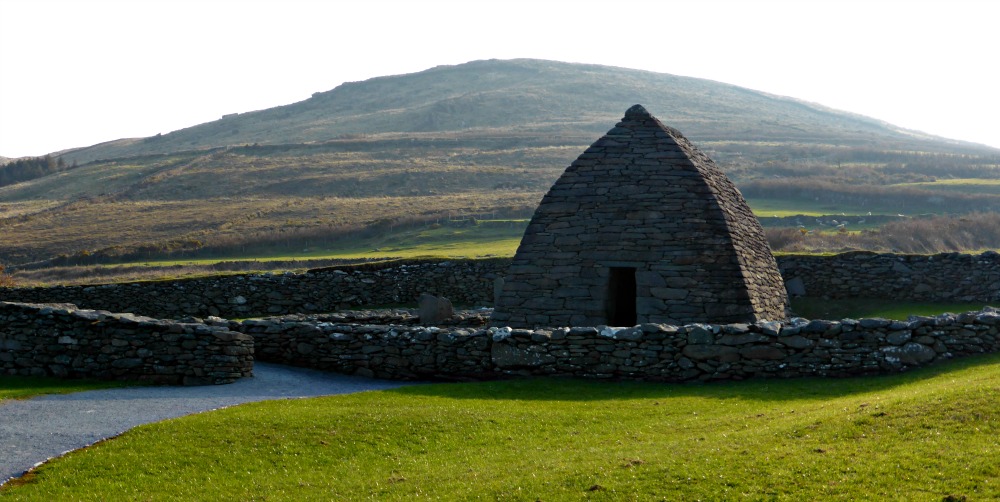
There is a visitor centre at this site with an audio-visual presentation and easy route to the Oratory for a small admission fee, but it wasn’t open during the time of our visit. The Oratory itself is free and there is an alternate parking area that it can be reached from when the visitor centre isn’t open, or if you’d prefer to skip the video and just stroll quietly through the site.
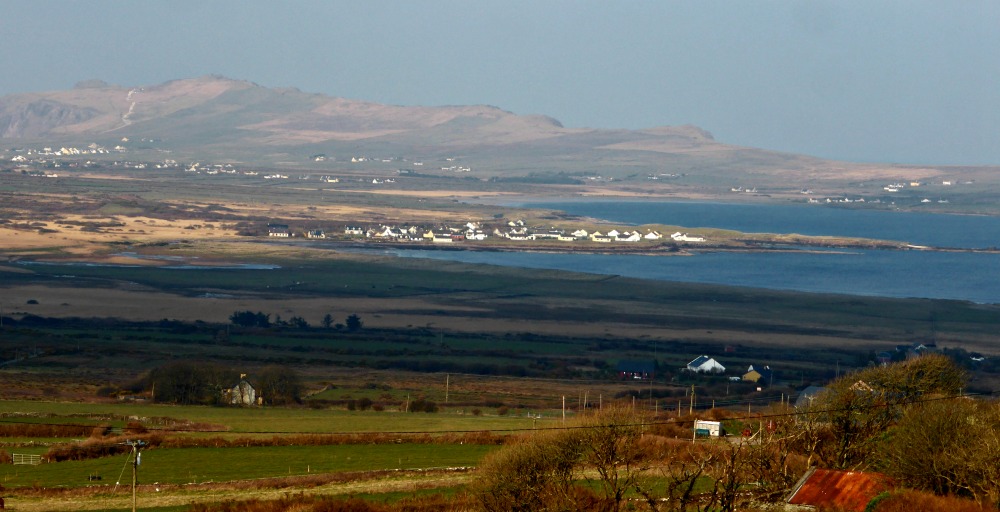
DELICIOUS FOOD AND DRINK
Could any trip to Ireland be complete without a trip to a local pub for some pub grub and a pint of Irish stout? I decided not so in Dingle Town I partook in both, well a half a pint of stout anyway. But that still counts right?
Recommended by Rick Steves, as soon as we started planning Ireland Murphy’s Pub went on the list of THE pub I had to visit in Ireland. Well as it turns out Murphy’s Pub also has a B&B so we decided that would be a great place to stay for the night too, especially since we wanted to just wander around the town in the evening.
Did you know though that Dingle actually has TWO Murphy’s B&B’s…and they are right next door to each other! We stayed in the one in the green building and ate at the one in the red building. Both had super friendly folks so I don’t think we could have gone wrong for either.
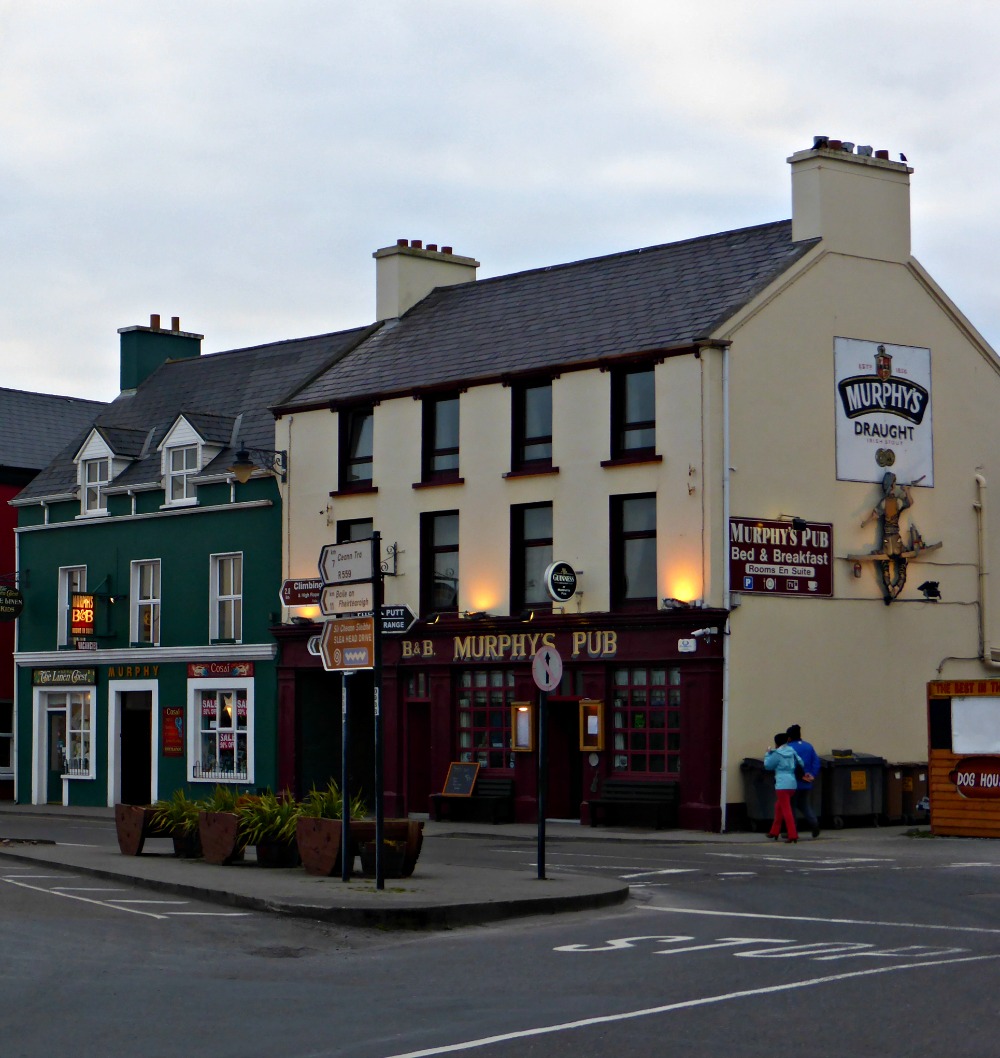
But back to the pub…
I love pub food on any day, as its comfort food like none other to me, and Murphy’s Pub didn’t disappoint. With my favourite cottage pie came sides of more potatoes (we were in Ireland after all), and other vegetables. And then a half-pint of Murphy’s Irish Stout to wash it down. So good. Why Murphy’s Stout and not Guinness? Well, you can get a Guinness anywhere so I wanted to go for something that I’d likely only get in Ireland.
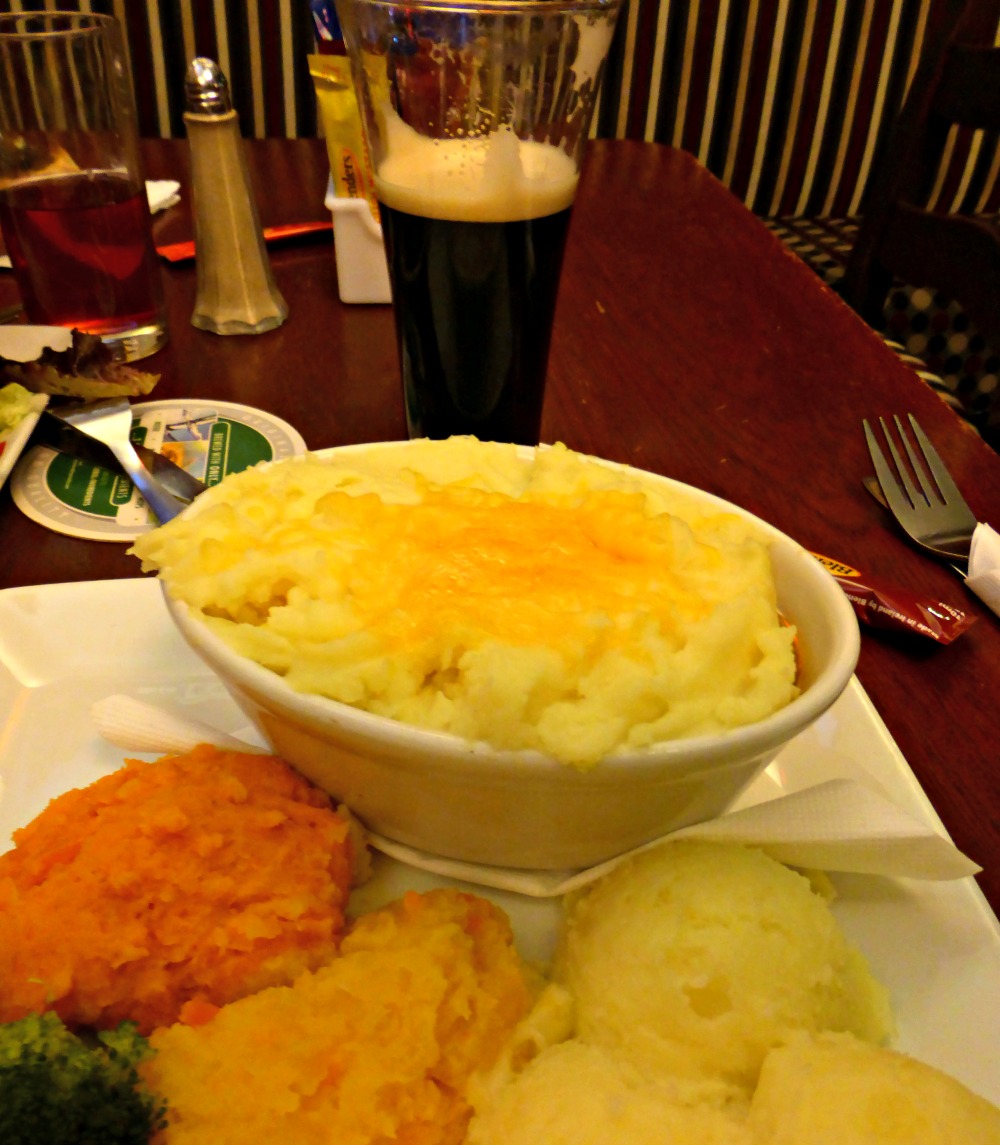
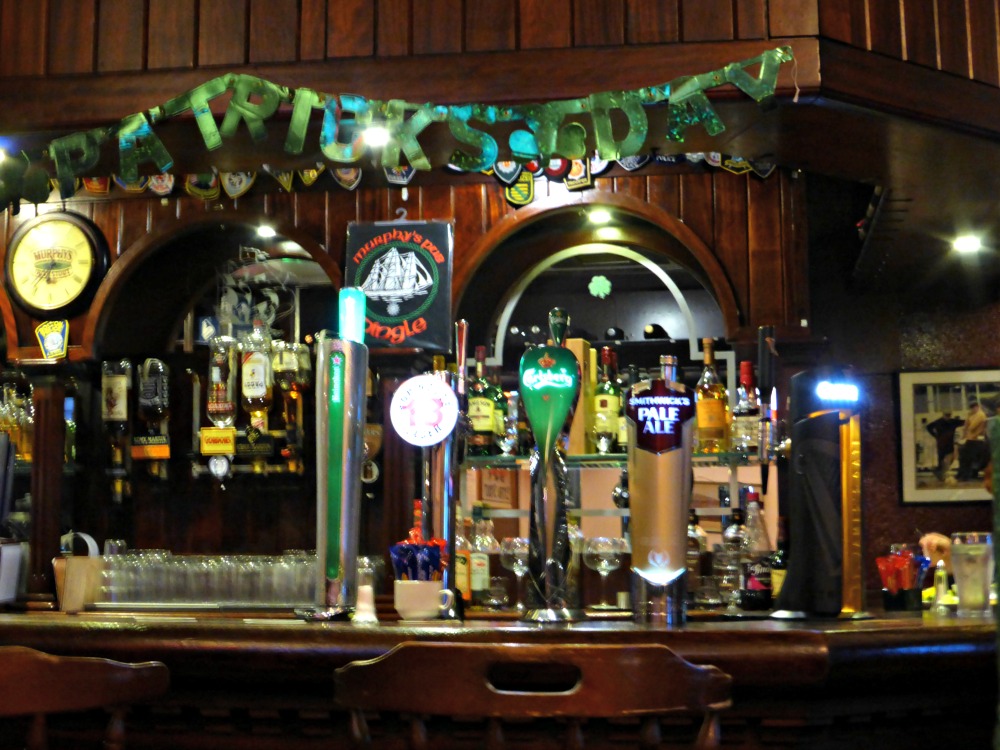
As you can see from the photo above, we were there around St. Patrick’s Day, the night before in fact. Now how Irish is that eh? And do they celebrate St. Patrick’s Day beyond that little banner above the bar? You bet they do. Which brings me to…
TRADITIONAL MUSIC
It’s no secret that the Irish love their music and they have some great bands (U2 of course!) and have inspired the music of others around the world (Flogging Molly being one I like really well). BUT it did come as a surprise to us that they love playing their music at 6:00 AM. But oh, they do. Well at least on St. Patrick’s Day they do when the Dingle Fife and Drum Band marches through the streets to gather up the townsfolk to head to mass. What a wake-up call. I loved it!
Check it out…
Now that is the traditional Irish music I was hoping to hear!
THE SHEEP
They are everywhere. Black ones, white ones, fluffy ones, big poofy ones, and they are all adorable. From the sheep we saw being born our night in Huntington Castle to the adorable little ones frolicking around the Beehive Huts. Sheep farming is big in Ireland and one of the things I was hoping we might have time for but didn’t, was a sheep dog demonstration. Maybe another time, but until then I was content watching the sheep do their thing. It never failed to bring a smile to my face.
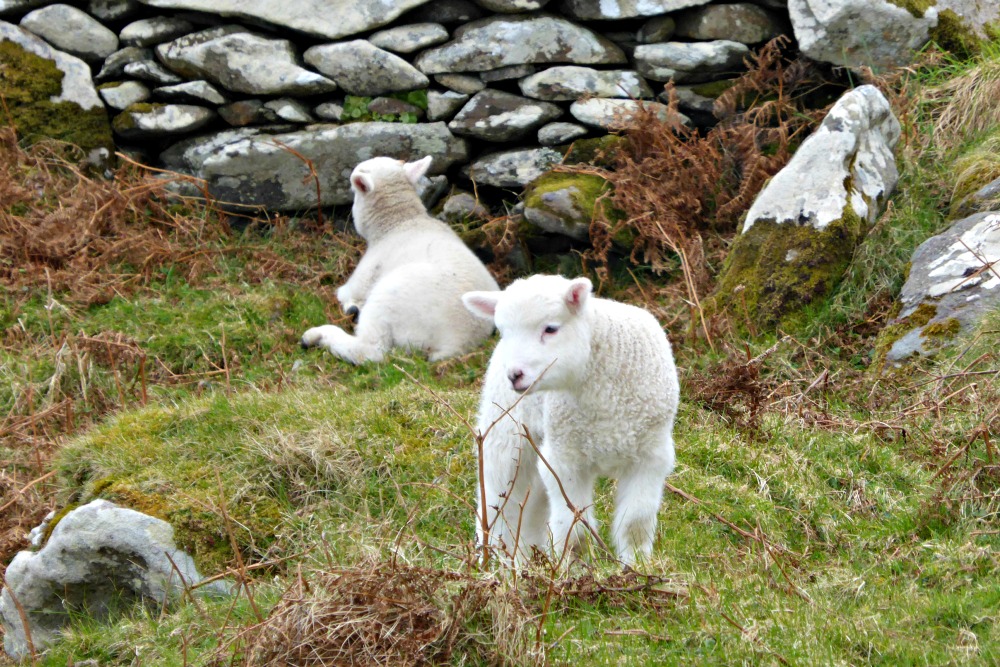
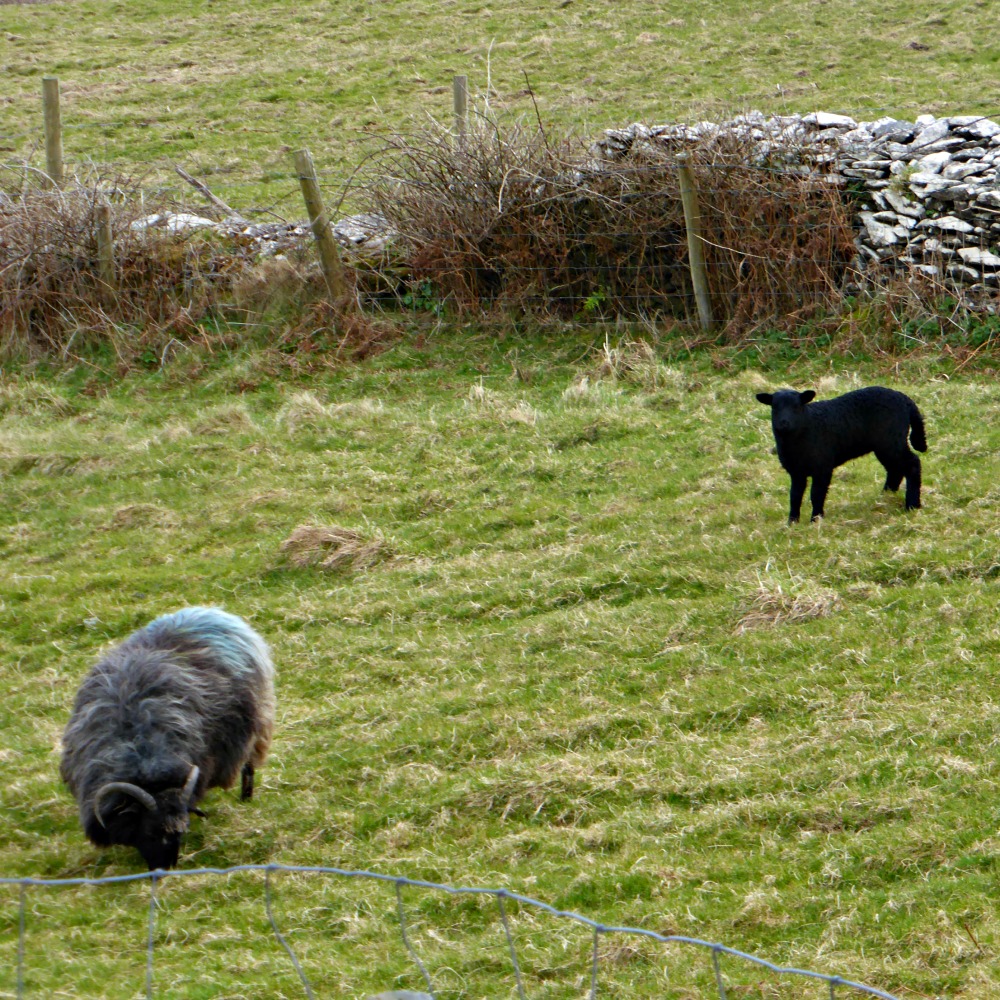
COLOURFUL DINGLE TOWN
Situated in a fishing port, Dingle Town is the most colourful little town I’ve come across yet and it was so pleasant to wander around for the evening. We visited the docks, strolled the main street, watched the sunset, and took lots of photos of all the bright and colourful buildings.
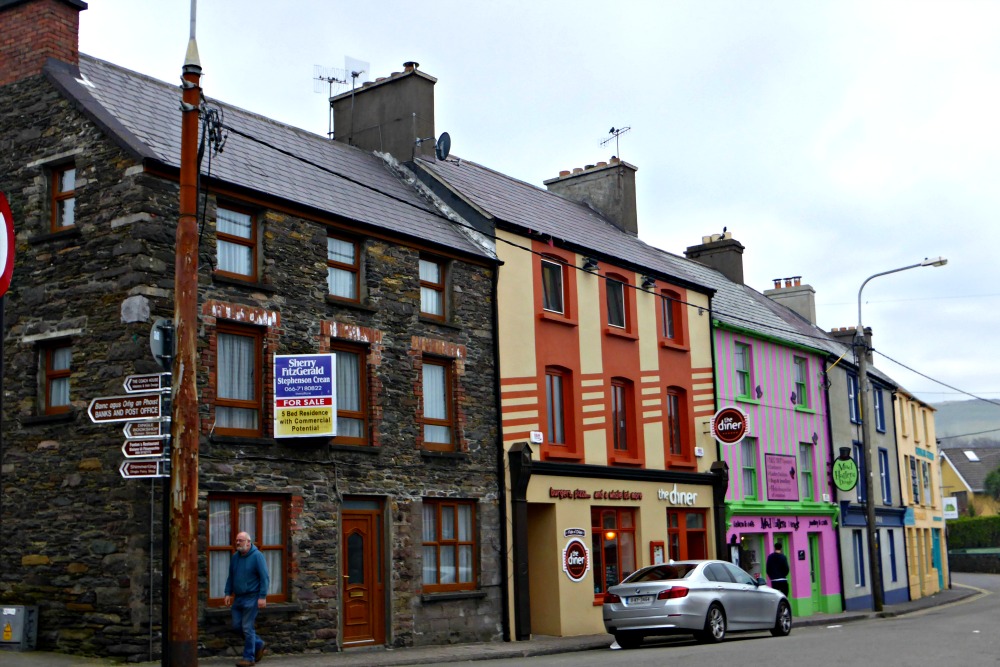
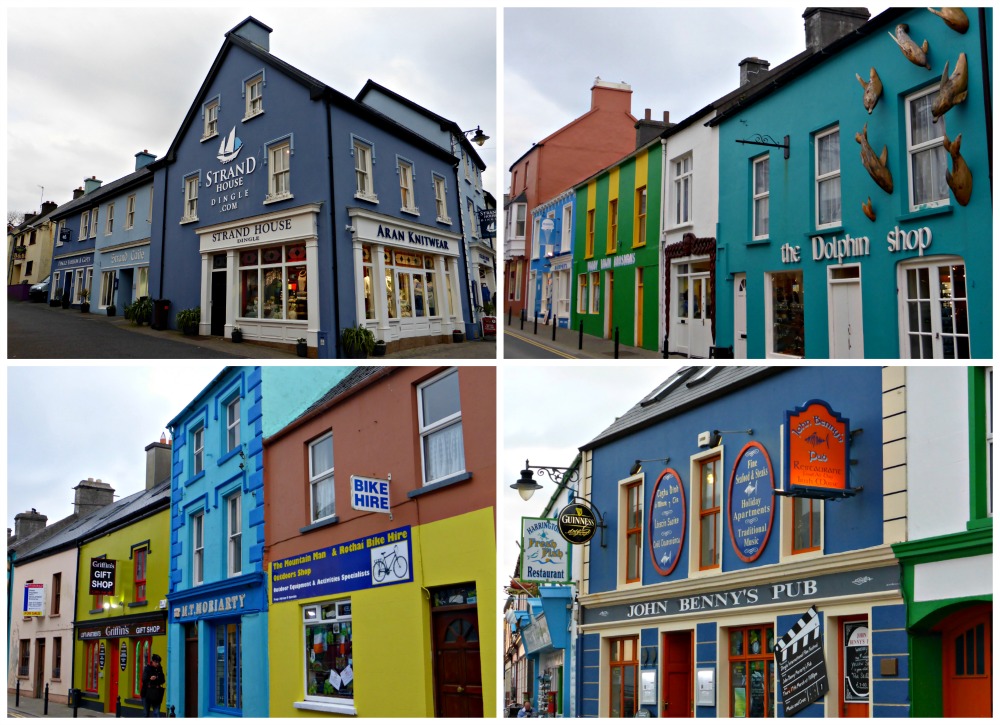
Reading about the town it sounds like it can be quite busy with visitors in the summer months, but in March it was pretty much just us and the locals and there really aren’t that many locals either (population only about 2,100 in 2011). Since the 90’s though that has almost doubled so it sounds like many people have discovered Dingle and its charms and decided it was too good to leave.
Tourism is one of its main industries and crazily enough part of that is owed to a Bottlenose dolphin named Fungie that has been treating visitors to his presence for about thirty years! They’ve even erected a statue in his honour by the port. We looked into taking one of the cruises out to see him ourselves but it didn’t work out this trip for us. No worries we still found plenty to keep us busy for the evening- like this sunset to cap off our evening on the beautiful Dingle Peninsula.
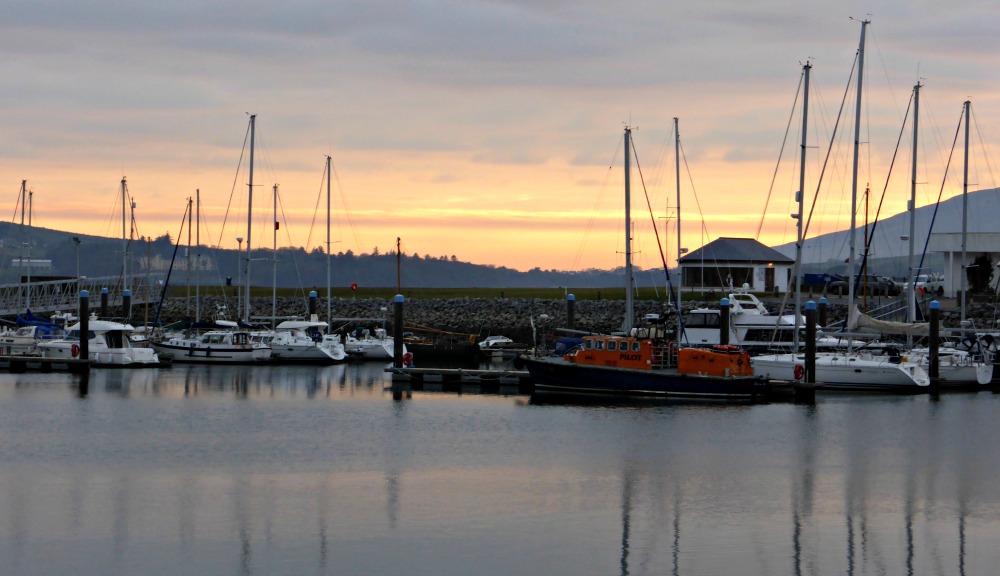
Want to save this for later? Click the Pinterest button on the left for a pinnable image!
RESOURCES | PLAN YOUR TRIP TO IRELAND
To book flights, rental cars, accommodations, and activities for your trip, please check out our recommended travel providers, favourite apps and websites.
- Dingle Peninsula Loop Trip: A kilometre-by-kilometre self-guided driving or cycling tour.
- Ireland’s Best-Loved Driving Tours: Includes 25 driving itineraries all over Ireland including “Beehive Huts & Coastal Splendours” around the Dingle Peninsula.
- Fodor’s Exploring Ireland: Includes “The Grandeur of the Dingle Peninsula” driving route.
- Rick Steves’ ‘The Best of West Ireland: Dingle, Galway, and the Aran Islands‘ episode of
TV show (whole episode) - Rick Steves Audio Europe App: With this
app you can listen to many excerpts from his radio shows and books. He has several that mention the Dingle Peninsula.
These are a few tours we would recommend for your trip to the Dingle Peninsula region.
Some of the links in the post above are affiliate links. This means if you click on the link and purchase the item, we will receive an affiliate commission but this does not affect the price to you. Please read our full disclosure policy here.
